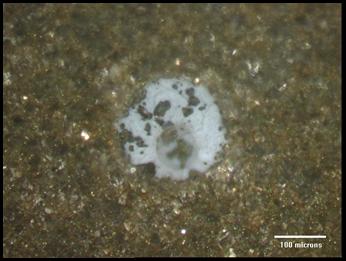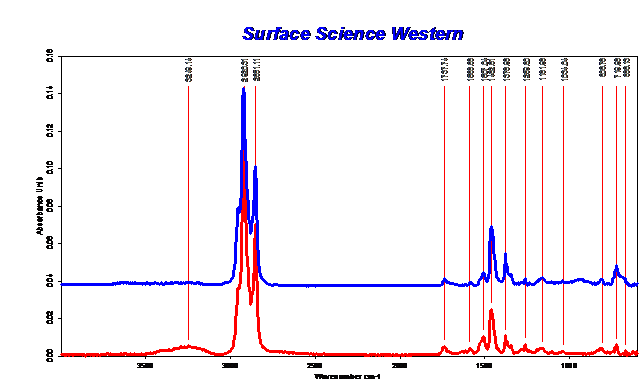Request for analysis:
A client sent a fuel door exhibiting crater defects along with a test panel with potential contaminants (one of which was craters created using a Polysporin® reference). We were asked to examine and identify the defect material in the craters.
Objectives:
Compare the material associated with the crater defects and tests panels to see if one of the suspect contaminants was the cause of the crater defects.
Methodology:
Multiple crater defects from the fuel door were examined using optical microscopy. The crater defects appear to have a “white” centre when viewed with polarized light. Various areas in and around the crater centres were analysed using Fourier transform infrared (FTIR) spectroscopy.
Results of the study:
An optical microscope image of a crater defect from the fuel door is presented in Figure 1. The white material at the centre of the defect was not a typical solid, but rather a liquid which ‘oozed’ during FTIR analysis. The FTIR spectrum of the white liquid was consistent with a hydrocarbon. The reference Polysporin sample, a hydrocarbon, was found to match with the liquid material found in the centre of the defects by FTIR (Figure 2).
Based on the FTIR results, the defect material inside the fuel door craters is a match to the reference Polysporin® material.

Figure 1: Optical microscope image of the crater defect

Figure 2: FTIR spectra comparing defect material and Polysporin reference material.

